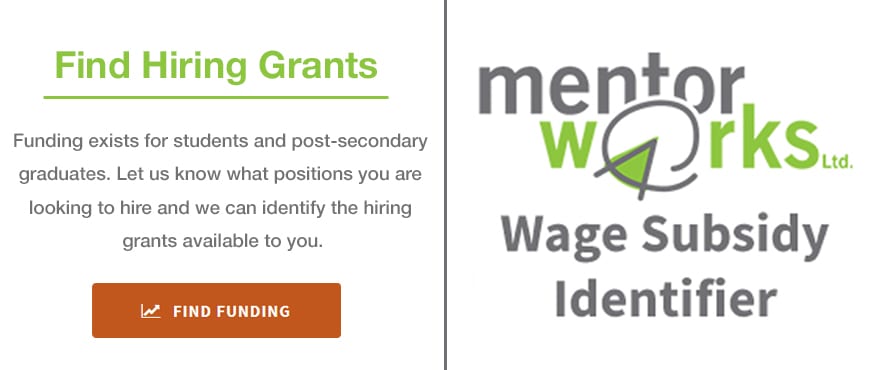It’s that time of year again – exams are finished, students are anxiously awaiting final results and prepping for convocation. For many who are about to graduate, this brings up the question of “now what?”
For many recent graduates this can be the first look at the unknown.
You’ve spent the past 2-5 years completing an intense diploma or degree program where the path was fully defined: you knew the courses you had to take, you knew the order in which you had to take them, and you successfully completed them.
As graduation approaches, so too does the anxiety of the unknown: how will I put this degree to work? Where will I find a job? What skills and experience do I have? What type of job do I want?
For many recent graduates this can be the first look at the unknown. Until now, many aspects of their lives were pre-planned and a clear path was defined. So, after being thrown into a brand new reality, how can they confront life after graduation? Recent graduates should consider these tips to ease your entry into the working world.
Start by Knowing What You Want in Your Job
Most recent grads have an idea of what they want to do after graduation, and if they’re one of the lucky few, they already have a job opportunity lined up. Many post-secondary institutions encourage co-op programs, which provides students with valuable job experience, networking opportunities, and extended looks into life in industry.
For others, however, they have very limited knowledge about what’s out there, the range of jobs, the range of industries, and the different types of work environments. Knowing what you want doesn’t mean that you know that you want to be a Marketing Manager for Company X, it’s more about knowing what type of work life you thrive in. Are flex hours important to you? Do you need a traditional 9-5 environment? Do you thrive in situations where work instructions are clearly defined? Are you a decision-maker or do you prefer to follow out others’ plans?
Understanding what you want takes time, and you may not know what you want for many years after graduation. For a lot of recent grads, it takes time, experience, and working in situations that don’t match their profiles to really grasp what they want.
Do This Now: Work with your school’s career advisory group. They can provide you with more insight into what the working world is like, what positions or workplace cultures your personality is matched to, and help you define your career goals. There are also several tests that you can take to help understand what types of work environments are most similar to your working behaviours.
Building Your Network
 Review your existing contacts, update your LinkedIn profile (more on that later), and start reaching out to people you know. Networking is tried and true; according to some thought leaders, over 20% of new hires found networking to be essential to their job hunt, and networking increases the likelihood of an interview by 5 times.
Review your existing contacts, update your LinkedIn profile (more on that later), and start reaching out to people you know. Networking is tried and true; according to some thought leaders, over 20% of new hires found networking to be essential to their job hunt, and networking increases the likelihood of an interview by 5 times.
For some this can be very awkward and uncomfortable, but it’s a very useful skill to have in business and will help you throughout your career. Want to improve your networking efforts? Here’s some sensible tips:
- Start Locally…Very Locally: Start with who you know and what you know – if you have a good relationship with any professors or with a career advisor at your school, start with them. Approach them to talk about career development and openings. Usually these discussions focus on high-level aspects of a career – “I’m interested in learning more about the tech industry” or “Marketing seems like an interesting career path”. The conversation evolves from here, and they may be able to introduce you to more contacts.
- Reach out on LinkedIn: I can’t stress the role LinkedIn plays in job hunting enough. Through LinkedIn, you’ll be able to find the names of people who are in similar roles as those you’re interested in, or work for companies you’re interested in. You’ll also be able to find connections through your network. Reach out to people with a customized message, connect with them, and start a conversation. Having a strong LinkedIn presence also helps improve your visibility for recruiters, interviewers, and hiring managers.
- Set up Informational Interviews: While you’re getting closer to knowing what you want from your job, you can set up informational interviews to learn more people in industry. Once you have a connection with someone you can ask them to meet for coffee to discuss their job. Informational interviews are a great way to strengthen your understanding of an industry or company.
This is also a great way to re-evaluate a company. You may have thought they would be a great fit, they look so good from the outside, but life as an employee there may be very different. Your dream company offers flex hours, free lunches, benefits, and relaxation space, but the company you’re considering requires 50+ hour work weeks with few benefits. Meeting with people at a company you’re interested in can really help you on your path of knowing what you want.
- Reach out to Recruiters: Recruiters, local employment agencies, and head hunters can help. Many people think that this type of service is reserved for mid-career and executive level people, but it can help you start your career as well. They may be able to introduce you directly to hiring managers or keep your résumé handy for when a position in your desired field comes up.
Flawlessly Prepare Your Documentation
When you’re networking and job hunting, many people are going to ask you for a résumé, CV, cover letter, or other documentation that outlines who you are, what you offer, and where you might fit in a company.
Start with Your Résumé
A résumé is your most powerful job hunting document. Having a strong 1-2 page résumé is your opportunity to cut through the clutter of candidates and stand out as a top prospect. There are many different approaches to writing a résumé, and it varies from industry to industry, but here’s some general tips to get you headed in the right direction:
- Objective: Don’t bother with a bland objective statement. It takes up room, and it’s generally unnecessary. Most of what you would put in an objective statement will be included in your cover letter.
- Customize it: Every time you apply for a job you should be making tweaks to your résumé. Each job will have an emphasis on different skills and experiences – you have to make sure your résumé reads appropriately for each position.
- Include All Relevant Experience: Most graduates come into the job market with limited professional experience, but they still have valuable job experience. You need to position your education, co-op placements, volunteer work, committee/student group work, etc. as valuable professional experience. After all, many of the skills you need for a job are obtained as a student.
- Get Feedback: Ask someone in your network to provide you with feedback on the résumé. Many people are involved in hiring and many people in a company will review résumés. If you ask for feedback you can get some tips on how to tailor your résumé for a particular industry or what people might look for.
- Be Cautiously Creative: Know what you’re applying for and who you’re applying to. Some industries would welcome a colorful résumé with images and a unique layout, while others are very conservative and traditional. I always recommend keeping a plain text version of your résumé with little to no formatting. Many companies use software to screen candidates, if you have a heavily formatted document this will be difficult to screen and tossed out immediately.
Draft a Cover Letter
After you have a solid résumé you should put together a basic cover letter. This will act as a template to help you build custom letters every time you apply for a job. Similar to my advice above, I always recommend writing a custom cover letter. No hiring managers like to see bland and vague statements; it’s a clear sign that you’re applying for a bunch of jobs at once. By customizing your résumé, you show the hiring manager that you’ve actually thought about the job, the company, and how you fit. This demonstrates interest and shows that you have attention to detail.
- Keep it relatively short: This isn’t a book – this is just an introduction to who you are, an overview of how you fit with the company, and a bit more detail on some of your skills, experience, and information included in your résumé. Try to keep the letter to 3-4 paragraphs, always introduce yourself, explain why you’re interested in the position, and always close with a thank you. It helps to have a bulleted list of how you address their top requirements for the job.
- Format it: When you’re job hunting, you’re promoting your brand. Your cover letter should match your résumé. You should use the same fonts, spacing, and colour scheme that you do on your résumé. Also, remember that this is a letter, and it should look like one. Include the date, address it properly, and sign it (by hand).
Update LinkedIn:
Many recruiters use LinkedIn to view a candidate and get a bit more insight into them. You should make sure your LinkedIn profile matches your résumé relatively closely, and make sure it is relevant and up to date. When you add anything to your profile make sure you provide some commentary on it. Don’t just write that you were a sales associate from 2013-2016, explain what the role entailed, what was your responsibility level, and what were some key achievements. Similarly, make sure your summary is reflective of who you are and what types of opportunities you’re interested in. This will help when people scan your profile see what you might offer. Lastly, make sure your headline is updated.
Keep a Brag Sheet:
Whenever you achieve something, complete a major or complex project, or surpass expectations, you should document it. By keeping an active ‘brag sheet’ you’ll be more prepared for your inevitable interviews, but you’ll also be able to more easily update your résumé and cover letter. Most people want to know what you did in a role and what you achieved. Writing these achievement statements is much easier when you have an active and updated brag sheet. It doesn’t need to be anything too fancy, after all you’ll be the only one that sees it in a raw format, but it should be organized in a way that’s easy to follow and use as a basis for résumé and cover letter writing.
Maintain a List of References
You should always have an active list of references, one that is constantly expanding and changing. When you’re going through the interview phase it’s always good practice to have a list of references handy. You can use a document that is formatted similar to your résumé and matches your branding that provides your top 2-3 references who would be able to speak to the specific skills and experience the job that you’re applying for requires.
Although you will develop a very long list of references over time, make sure that you provide hiring managers with the most appropriate references. Lastly, make sure you keep in touch with your references and inform them when you’re using their name. A quick heads up is always appreciated so they’re not getting called out of the blue.
Keep Your Documents Updated
This might seem like a daunting process, but it can be tremendously helpful in figuring out what you want and how to set yourself up for success. The good news is that once you’ve done this once, keeping your documents and professional portfolio updated is relatively easy and straightforward.
I recommend reviewing your LinkedIn profile every 3 months and updating your résumé and cover letter every 6 months. Of course, if there are major changes between updates then you should go in and reflect these changes in your documents. Having an updated profile will help minimize time spent on the application process and allow you to optimize your job hunting time.
I Know What I Want. Now What?
The process I’ve discussed above should provide you with a good start on how to begin the job hunt and start figuring out where you want to go. Now you’re prepped to start applying for jobs and get into the working world. If you find that you don’t have the requisite skills or experience you need, then start thinking creatively about how you can get them. What professional certifications or designations are required, and how do I get them? Can I start in a junior or entry-level position and work my way up? Do I need to do a post-grad program to get the skills and experience?
Keep working with your network and while you’re job hunting you can develop skills in various ways. There are plenty of free courses online through services such as Coursera and Udemy that offer training and professional development. Also, you can take courses at a local college or university, volunteer in the community that offers some relevant experience (this is a great way to network as well), or look for contract opportunities that will allow you to get a foot in the door.
How do Canadian Government Grants Help Recent Graduates?
There’s good news out there for recent grads, the Canadian government offers a range of wage subsidies and hiring incentives to help companies offset the cost of a new hire. This encourages companies to hire a recent graduate who may have less experience than other candidates. Additionally, companies can take advantage of government grants for training to help accelerate the new hire’s learning, providing them with additional skills and experience.
If you’re a recent graduate who’s looking for an advantage over older, more experienced job candidates, make sure to tell your prospective employer about these government programs.
Companies that are interested in hiring a recent graduate can learn more about the process of obtaining Canadian government grants by accessing Ryan’ Wage Subsidy Identifier. By providing information about your company, industry, and job position, we can help discover wage subsidies that reduce the financial commitment of hiring a new graduate by up to 50%.
Recent Youth Employment News:
[display-posts tag=”youth-employment” posts_per_page=”5″]
Subscribe to Funding Updates
Get the top Canadian government funding news, delivered to your inbox. You can unsubscribe at any time.



